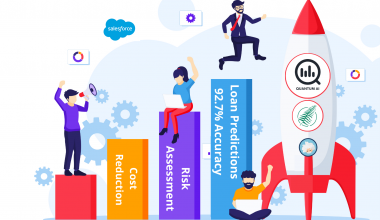As we step into 2024, the finance industry finds itself on the brink of transformation – strategic choices made by financial institutions will be tested as they face challenges and changes in an ever-evolving landscape of finance. Embracing this dynamic shift is not just a choice; it is a necessity for financial institutions looking to remain competitive and provide quality services to their customers. Financial institutions need to identify emerging trends in 2024, and react accordingly:
Challenging Economic Landscape
In 2024, the global economy is facing headwinds that will significantly impact the finance industry. The deceleration is driven by factors including geopolitical tensions, rising inflation, and the slow recovery from the pandemic’s economic shock. Retail banking businesses will have to grapple with slower growth from weakening household and business finances that pressure banks’ loan books; rising costs from new rules and regulations due to the heightened scrutiny of risk modelling and controls and additional banking features; as well as declining customer satisfaction and loyalty with the emergence of new banks in the market. As such, their ability to adapt and cut costs with innovation and transformation measures will be critical for financial institutions to navigate the turbulent waters.
Mainstream Adoption of Banking as a Service
Banking as a Service (BaaS) will gain traction and achieve mainstream adoption by the end of 2024 – where 30% of banks with greater than $1 billion in assets will launch BaaS to generate and diversify revenue streams by collaborating and deploying these services in other businesses, according to Gartner’s Hype Cycle for Digital Banking Transformation.
BaaS describes a model in which licensed banks integrate their digital banking services into the products of other businesses. An example is Plaid – offering a platform that allows businesses, including fintech start-ups, e-commerce platforms, and even traditional financial institutions, to connect with consumers’ bank accounts and access financial data securely through APIs. For instance, users may link their bank accounts to a budgeting app to track their expenses through BaaS, allowing them to retrieve transaction data and manage finances more seamlessly. With BaaS, businesses can access financial data and payment initiation services to offer a more comprehensive suite of financial services without needing to develop these capabilities in-house, ultimately benefitting customers.
New Technology Trends
The advancement of technology – Generative Artificial Intelligence, Digitisation of Money, Open Banking, BaaS, and more, is influencing the foundational architecture of the finance industry, reshaping how financial institutions operate and serve customers’ needs. For instance, bank spending on cloud computing services is forecasted to grow more than 16% a year through 2024, reaching $77 billion. In 2024, financial institutions that want to remain competitive must evolve. Legacy technology with layers of systems and platforms that require extensive maintenance; siloed data that requires laborious data collection, cleaning, and organisation to derive at meaningful insights; and the inability to integrate with new technologies, are three major pain points that sets financial institutions back from their newer competitors.
Keeping Pace with the Next Moves
Financial institutions that face challenges in embracing these changes – be it the cost to build in-house versus buy externally or the lack of resources to implement changes, may find it strategic to partner with an existing service provider. At the heart of this transformation is Fern Software – an organisation specialising in the development and implementation of core banking systems and its supporting modules, including a range of products like Abacus, FaaSBank, Quantum AI and BayTree. Keep pace with the next moves in the finance industry and learn more about the available solutions today.






